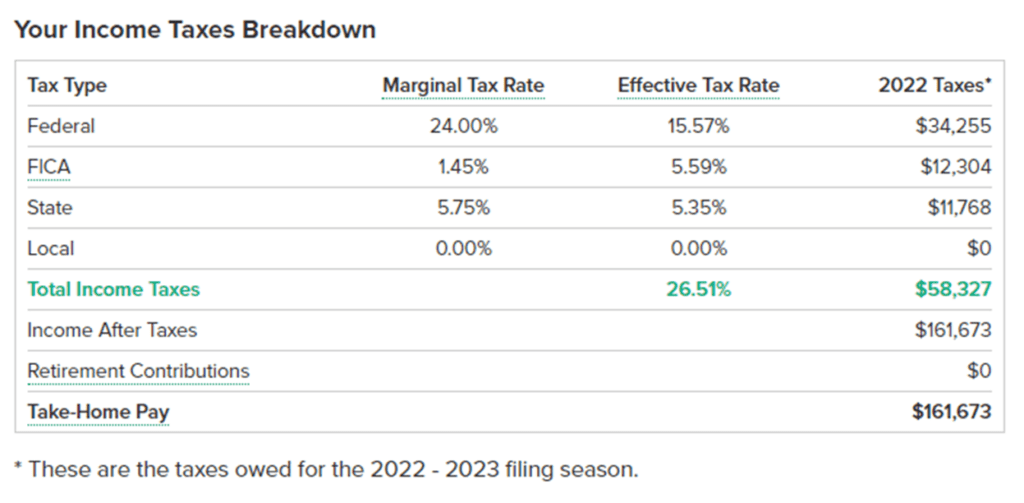IRS Tax Penalty Jumps to 8% – Big Surprise Coming to Millions of Americans
As of Oct. 1, the Internal Revenue Service has increased the interest rate for tax underpayments to 8% which comes in much higher than the interest rate of 3% just two years ago. The IRS determines the interest rate every quarter using the federal short-term rate plus three percentage points for most individual taxpayers. Rising interest rates are the cause of the large spike.
Who Do Tax Penalties Affect?
Really, everyone.
It is common for a W2 employee to have their taxes automatically deducted based on their individual income. What if you’re married? Have a second job? Run a business on the side? Any one of these factors can cause a W2 employee to owe much more than what is being automatically deducted. If you are a 1099 employee, you must make your estimated tax payments on your own. Retirees receiving a pension are generally withholding too little or too much. Estimating your taxes can be easy when you have the correct tools.
Tax penalties can be severe if you underpay for the year. Check out our specialized tax strategy guidance for federal employees to help stay on top of your obligations. You must make your estimated tax payments or be hit with costly tax penalties that could run into the thousands of dollars with the higher interest rates.
What is the Penalty for Underpayment of Taxes?
Also known as the “Failure to Pay” penalty. It is a tax penalty that is imposed on individuals who haven’t paid enough of their total estimated tax and withholding that is due. You must make payments as you receive income throughout the year through either: payroll withholding, estimated quarterly taxes, or a combination of both. In effect, the penalty is the sum of the penalties for each day during which an underpayment exists. The penalty for each day is computed by multiplying the daily rate by the underpayment amount. The daily rate is the rate determined under IRC 6621 divided by the number of days in the calendar year.
What is the Safe Harbor Rule?
The Safe Harbor rule could save you from costly penalties when the requirements are met. That means, the penalty could be waived or reduced.
The IRS will not charge an underpayment penalty if:
- Owe less than $1,000 in tax after subtracting withholdings and credits OR
- Paid at least 90% of the tax for the current year OR
- 100% of the tax shown on the return for the prior year, whichever is smaller
The rule is slightly different for higher income earners. If your Adjusted Gross Income (AGI) on your previous year’s return is over $150,000 for individuals OR AGI on your previous year’s return is over $75,000 if married filing separately.
You must pay the smaller of:
- 90% of the tax shown on the current year’s tax return OR
- 110% of the tax shown on the return for the previous year
Additional Penalties – Failure to File
The Failure to File is calculated based on how late you file your tax return and the amount of unpaid tax as of the original payment due date (not the extension due date).
The calculation is as follows:
- 5% of the unpaid taxes for each month that a tax return is late
- The penalty will not exceed 25% of your unpaid taxes
- If both a Failure to Pay (underpayment) and Failure to File Penalty are applied in the same month, the Failure to File Penalty is reduced by the amount of the Failure to Pay Penalty for that month, for a combined penalty of 5% for each month that you return was late.
How to Estimate Your Tax Withholdings
On a regular basis, we use an effective tax rate calculator. You can find the calculator using this income tax calculator from SmartAsset. The US tax code follows a progressive tax system so even if you fall in one tax bracket, your effective tax rate is usually much lower.
Example (living in Virginia):
- Spouse 1 = $175,000
- Spouse 2 = $45,000
- Combined Income = $220,000
- Federal Tax Bracket = 24%
- State Tax Bracket = 5.75
In this example, you may be in the 24% federal tax bracket and 5.75% state bracket, however your effective tax rate would be much lower at 15.57% federal and 5.35% state. Using an effective tax rate calculator will help you better determine your taxes owed.


Estimated Tax Payments Are Due as Follows (for 1099 earners):
- January 1 to March 31 – April 15
- April 1 to May 31 – June 15
- June 1 to August 31 – September 15
- September 1 to December 31 – January 15 of the following year
Where to Send Estimated Taxes:
You may send estimated tax payments with Form 1040-ES by mail or you can pay online at the official IRS Payments page.
Reach Out to Us!
If you have additional federal benefit questions, reach out to our team of CERTIFIED FINANCIAL PLANNER™ (CFP®), Chartered Federal Employee Benefits Consultants (ChFEBC℠), and Accredited Investment Fiduciary (AIF®). At PlanWell, we focus on retirement planning for federal employees. Learn more about our process designed for the career federal employee.
Preparing for a federal retirement? Check out our scheduled federal retirement workshops. Sign up for our no-cost federal retirement webinars using this link. Make sure to plan ahead and reserve your seat for our FERS webinar, held every three weeks. Interested in having PlanWell host a federal retirement seminar for your agency? Reach out, and we can collaborate with HR to arrange an on-site FERS seminar.
Want to fast-track your federal retirement plan? Skip the FERS webinar and start a one-on-one conversation with a ChFEBC today. You can schedule a one-on-one meeting through our contact page.










